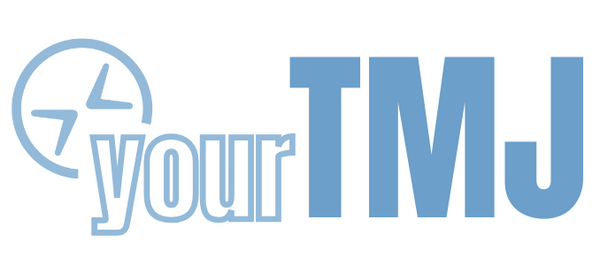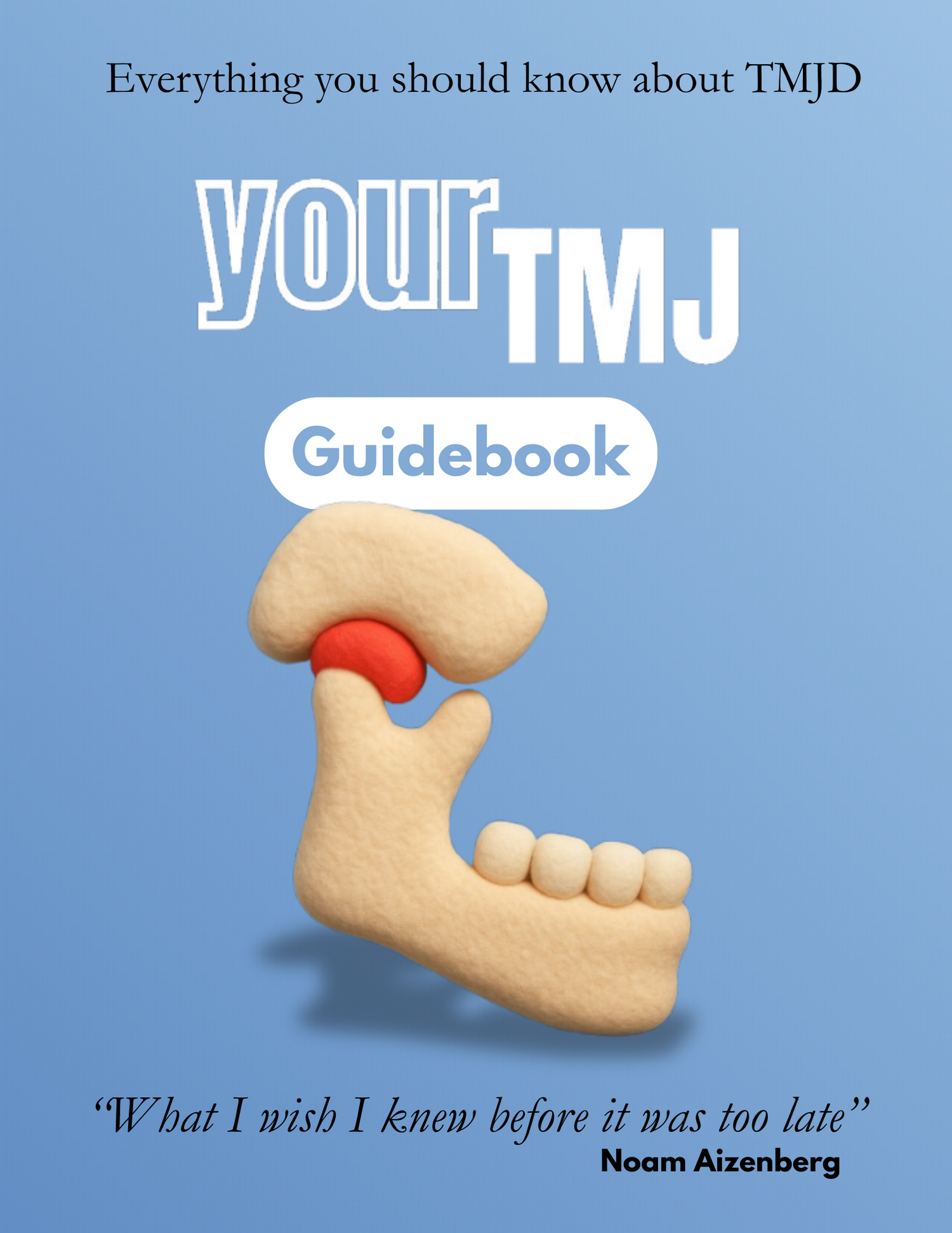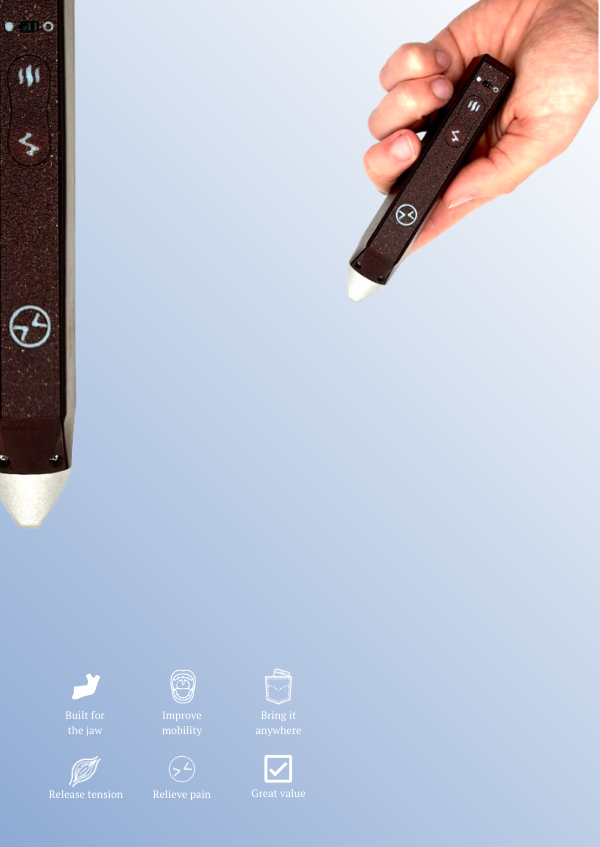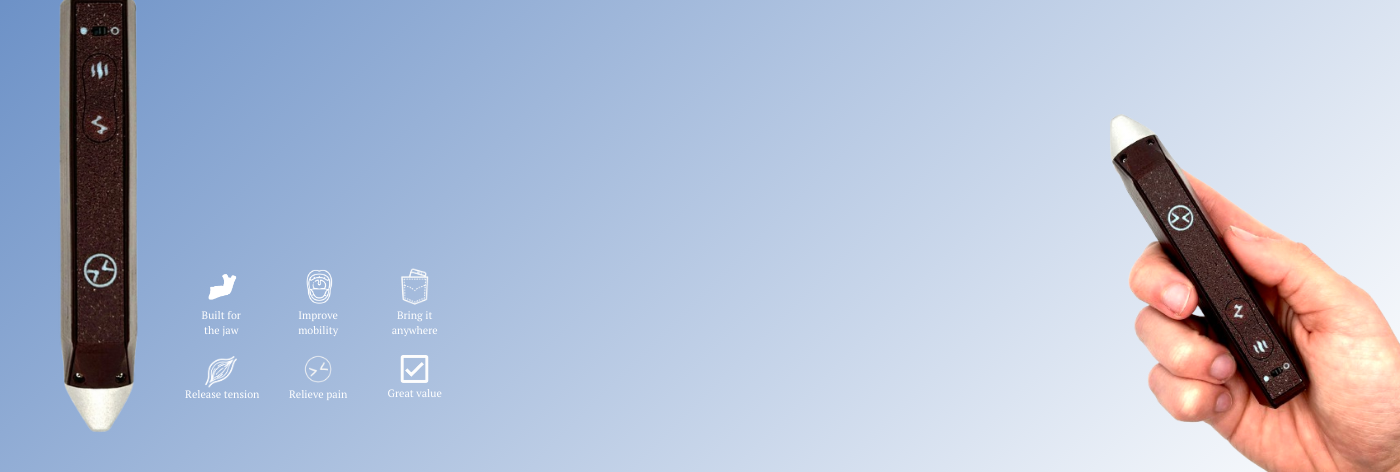How is TMJ Treated?
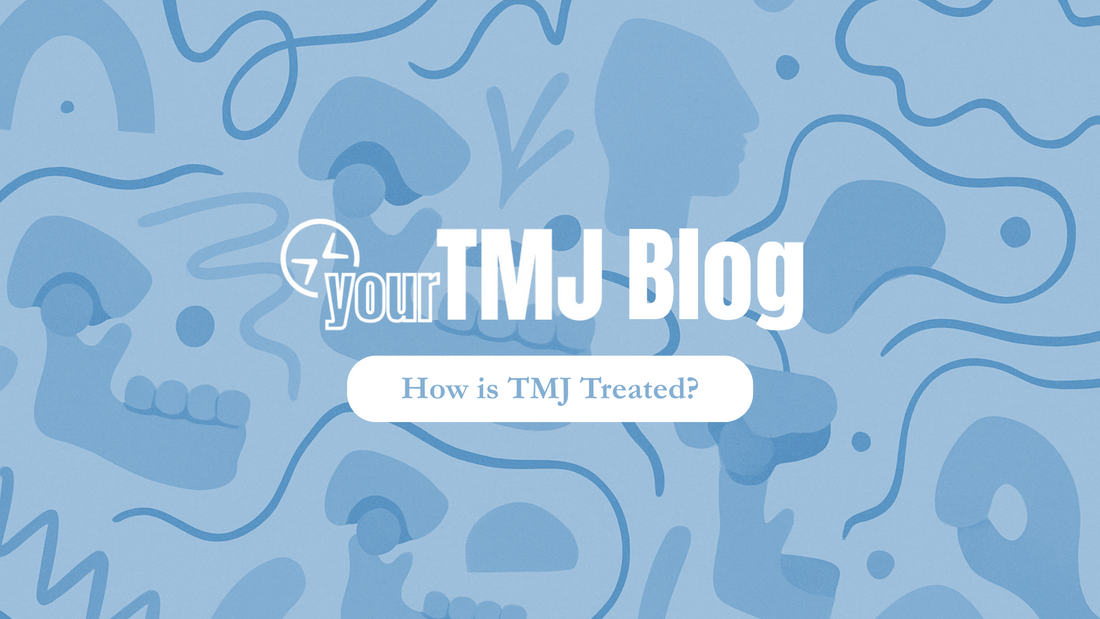
How Is TMJ Treated?
TMJ Disorder isn’t like a sprained ankle where you just ice it and wait. Because it can come from the joint, the muscles, the ligaments, the nerves, your posture, your airway, your bite—treatment isn’t about finding a single fix. It’s about understanding the system and starting with the least invasive options first. Below is a breakdown of the main treatment approaches, listed roughly from most conservative to least.
Postural Changes
Risk Level: Low / Reward Level: High
One of the biggest contributors to TMD is a retracted lower jaw. Moving your jaw forward just 2–4mm while resting can take pressure off the back of the joint, reduce disc compression, and prevent degeneration. It’s subtle but powerful. You should also address head and body posture. Forward head posture creates tension on the jaw. Side sleeping (instead of back sleeping), nasal breathing, and holding your tongue to the roof of your mouth can also help reset proper alignment.
Physical/Manual Therapy
Risk Level: Low+ / Reward Level: High
This is about more than massage. Physical therapy for TMD targets muscle imbalances, joint mobilization, and disc mechanics. A well-trained PT will show you exercises to strengthen muscles like the lateral pterygoid, improve joint motion, and reduce scar tissue. Movement is essential. Without it, joints stiffen and inflammation builds. If you can’t find a good PT, you can learn the techniques yourself. (The guidebook covers many step-by-step.)
Thermotherapy (Hot/Cold Compresses)
Risk Level: Low / Reward Level: Medium
Warm compresses can help relax tense muscles and improve blood flow. Cold compresses may be useful if there’s acute joint inflammation. Most TMD pain is muscular, so heat is generally preferred. It won’t fix the root cause, but it can offer temporary relief and reduce pain enough to let you do exercises more comfortably.
Self-Massage
Risk Level: Low / Reward Level: Medium
Muscle knots and trigger points in the masseter, temporalis, and pterygoids are extremely common in TMD. You can often feel these as tight, painful spots that refer pain elsewhere (like the temples or ears). Learning the right way to do internal and external muscle release can make a noticeable difference. Just don’t overdo it. And know it won’t resolve the disorder—it’s a tool to manage symptoms.
Pharmacology
Risk Level: Low / Reward Level: Low
OTC anti-inflammatories like ibuprofen or aspirin may reduce inflammation short-term, but they don’t solve the underlying issue. Prescription muscle relaxants or anti-anxiety meds are sometimes given, but again, they’re temporary solutions. If your TMD pain is unbearable, this can help in the short run while you work on root cause fixes.
Massage Therapy
Risk Level: Low+ / Reward Level: Medium
Seeing a massage therapist who understands the jaw can be incredibly helpful for managing pain and tension. It won’t address disc displacement or joint instability, but for muscle-driven TMD, it can bring short-term relief. Just be wary of the cost, especially if you’re doing nothing else to fix the mechanics behind the pain.
Chiropractic
Risk Level: Medium / Reward Level: Medium
This one depends entirely on the practitioner. Some chiropractors focus on gentle, targeted TMJ work and postural adjustments. Others perform aggressive manipulations that can stretch or even damage delicate ligaments around the joint. If your chiro is trying to sell you a 12-session package before understanding your symptoms, that’s a red flag. Proceed with caution.
Dry Needling
Risk Level: Low+ / Reward Level: Medium
Dry needling can release deep trigger points and increase blood flow in chronically tight muscles. If you’ve had stubborn muscle knots that massage and heat haven’t touched, this may be worth trying. It’s not addressing the joint itself, but it can reduce secondary muscle pain from compensation and clenching.
Botox
Risk Level: Medium / Reward Level: Medium
Botox injections into the masseter or temporalis can reduce muscle overactivity and relieve some forms of TMD. It can also reduce nighttime clenching. But it can also mask symptoms and destabilize an already compromised joint. If you’re considering this, make sure it’s done by someone experienced in TMD—not just cosmetic injections.
Arthrocentesis
Risk Level: Medium / Reward Level: Medium
This is a minor surgical procedure where the TMJ is flushed with fluid to remove inflammation and improve mobility. Sometimes combined with steroid injections. It’s typically recommended when there’s persistent joint pain or closed locking that hasn’t responded to conservative treatments. Has a solid success rate when done appropriately.
Arthroscopy
Risk Level: Medium+ / Reward Level: Medium–High
A minimally invasive surgery using small probes to look inside and treat the joint. Depending on the level (I, II, or III), this may involve removing scar tissue, adjusting the disc, or zapping inflamed tissue. Can be highly effective for patients with mechanical restrictions, adhesions, or internal derangements. But again, this is not the first step.
Orthodontic Treatments
Risk Level: Medium+ / Reward Level: Medium
Sometimes bite misalignment contributes to TMD. In rare cases, orthodontics can help reposition the bite to reduce joint strain. But this is risky. Many patients developed their TMD because of past orthodontic work that didn’t account for joint health. If you go this route, the orthodontist MUST be well-versed in TMJ mechanics. Not all are.
Invasive Surgeries
Risk Level: High / Reward Level: High (if successful)
For the most severe cases—where the joint is completely degenerated or the disc is perforated—surgical intervention may be required. This could include disc removal, joint reconstruction, or even total joint replacement. These are rare, and should only be done after exhausting conservative options and confirming with multiple trusted specialists.
The Bottom Line
Most TMJ cases can be resolved or significantly improved with conservative treatments. The real issue is that people often jump into splints, night guards, or even surgery without addressing the basics—like PT, postural corrections, muscle balance, and daily habits. That’s why I put together a free 76-page guidebook that lays everything out clearly, with diagrams, exercises, and research-backed info.
If you’re serious about treating TMJ Disorder, start with understanding the full picture. That’s where the real progress begins.
